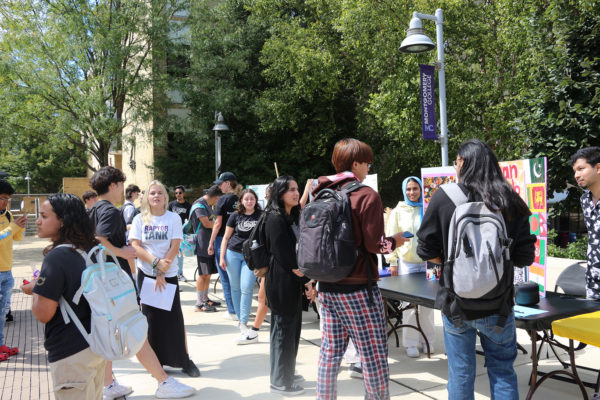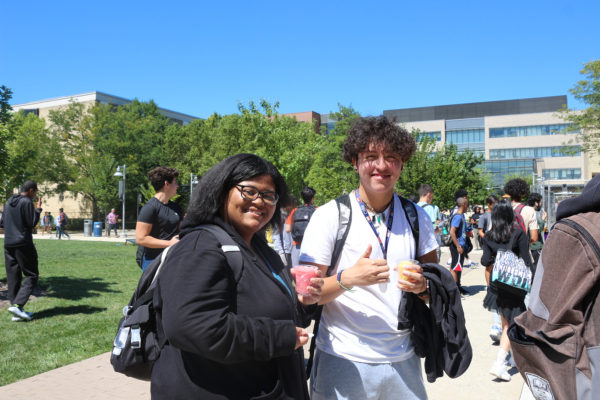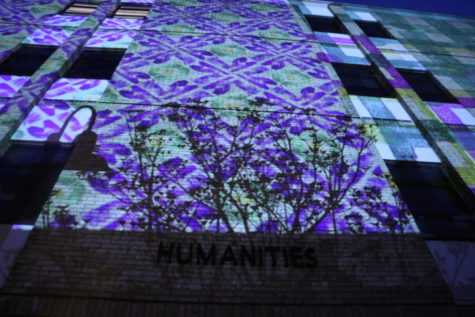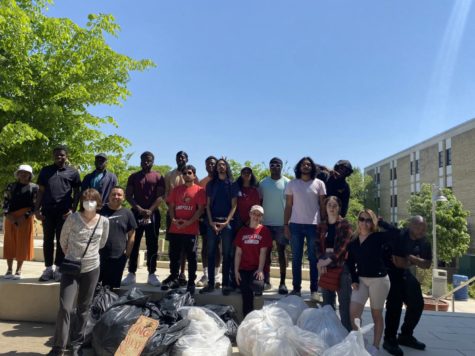A “green” Montgomery College is a rising star for energy saving
Montgomery College is getting greener, cleaner, and more environmentally friendly due to its sustainable growth. By taking clean energy initiatives and doing energy-saving projects like building solar panels, windmills, green roofs and a fleet of electric vehicles, the college is trying to become a leader in the county in saving energy and having sustainable growth.
A public and open access community college in Montgomery County outside of Washington, D.C., MC has nearly 60,000 students from over 170 countries and more than 1,500 faculty members. To support a big community college like MC, energy saving is constantly an important topic at the campus no matter whether it is for providing food, transportation, air conditioning, heating or light.
John Day, the Plant Maintenance and Operations Manager for the Germantown campus, has been working with the college for nearly 30 years. In the past decade, he has witnessed the campus become more energy efficient and clean by building and running the green-energy facilities as follows:
100 solar panels
The hundred solar panels built on the flat roof of Bioscience Building generated 158,282 kWh in total since they went into operation three years ago, according to Solar Energy World. This means during that period, these solar panels have saved six trees, 47 pounds of coal, 99,100 miles which equals 3,670 gallons of gasoline, and a total of $21,843 financially.
There are seven buildings in total on the campus. Day said he expects there will be more solar panels built on those roofs in the future.
5 windmills
They can generate 16,900 kWh per year, which can support 1.5 individuals’ electricity consumption in a year, according to the U.S. Energy Information Administration. A U.S. residential utility customer uses 10,766 kWh on average per year.
Day said the energy generated by both the solar panels and windmills contributes 5 percent of the energy needed on the campus.
1 green roof
On the flat roof of the Bioscience Building, vegetation from the Arizona desert is planted. This plant does not need much water to survive.
When it rains, the vegetation will absorb the water. After it turns sunny, the water on the surface will evaporate to keep the atmosphere moisturized. Meanwhile, the plant will produce oxygen and consume carbon dioxide through photosynthesis. This way, instead of causing flooding or going in the drains, the rainwater on the green roof help generate more fresh air for the campus.
9 frozen water tanks for air conditioning
There are nine frozen water tanks in the Bioscience building to help the air conditioning system generate cold air for the building.
During the non-peak hours from 11 p.m. to 5 a.m., these tanks work to generate very cold water and keep it in the tanks. During the daytime, these tanks will send the cold water to the air conditioning systems to generate cold air. Instead of fully depending on electricity to generate cold air, the frozen water helps reduce the energy used and saved 60 to 70 percent on the electricity bills, said Day.
A sophisticated Facility Control Center
Day calls the Facility Control Center at the college “state of the art” because the computer system in the center is connected to and monitors all the facilities on the campus.
The system can detect the performance and status of each facility running in the campus. For example, if the temperature in Day’s room is lower than 72 degrees Fahrenheit, the control center will instruct the air conditioning to stop providing cold air for the room until its temperature is higher than the standard setting.Unlike conventional air conditioning that will keep working constantly as long as it is turned on, the computer system at the Facility Control Center can continuously communicate with and monitor each facility and make the best use of its energy generated and to save more energy.
Recycling
Day said that at MC, they recycle almost everything in the campus from plastics, paper and glass, to name a few.
A fleet of electric vehicles
During the past five years, MCGC got all its rangers (similar to golf carts) and shuttle buses charged by electricity and gas-free to save coal and clean air.
The rangers will carry staff to conduct security and maintenance duties around the campus. The shuttle buses will carry and transfer passengers between the three MC campuses.
“I have an 8-year grandson. I want him to be able to breathe the clean air when he is 30 years old without wearing a mask,” said Day, who will carry on with his hard work to maintain a green and clean environment for the campus.
After learning from Day, who showed me some of the aforementioned green energy facilities from solar panels, windmills, to the green roof, I feel very proud of the initiatives MC has taken to produce clean energy and save energy. While we can be more creative to use the inexhaustible resources from the mother nature, we must also be more sensitive on what we can do to save energy in our daily life. It could be killing the phantom energy consumed at home, using LED lights, getting a water-saving sink, or bathing no more than once a day.
We, the human beings, and other organisms in the world are one body with Mother Nature. Saving resources taken from her and keeping the earth green and clean is to save ourselves and reserve a green and vibrant world for the younger generations.








Mickey • May 10, 2021 at 2:51 am
HVAC Repairs could be a hassle most times as you may not know when a problem could occur and could be costly at times. Luckily these kinds of situations could be avoided with HVAC Maintenance. It is always a good idea to have an HVAC contractor in Rockville look into your HVAC system and do preventive HVAC maintenance. These could save you money, the hassle and avoid any uncertainties with your HVAC system.